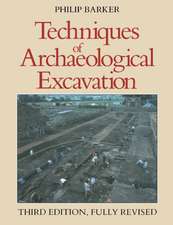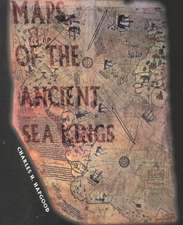The Archaeology of Mediterranean Placemaking: Butrint and the Global Heritage Industry
Autor Dr Richard Hodgesen Limba Engleză Paperback – 30 mai 2018
| Toate formatele și edițiile | Preț | Express |
|---|---|---|
| Paperback (1) | 235.63 lei 6-8 săpt. | |
| Bloomsbury Publishing – 30 mai 2018 | 235.63 lei 6-8 săpt. | |
| Hardback (1) | 772.24 lei 3-5 săpt. | |
| Bloomsbury Publishing – 16 noi 2016 | 772.24 lei 3-5 săpt. |
Preț: 235.63 lei
Preț vechi: 304.66 lei
-23% Nou
Puncte Express: 353
Preț estimativ în valută:
45.10€ • 49.01$ • 37.91£
45.10€ • 49.01$ • 37.91£
Carte tipărită la comandă
Livrare economică 21 aprilie-05 mai
Preluare comenzi: 021 569.72.76
Specificații
ISBN-13: 9781350069596
ISBN-10: 1350069590
Pagini: 184
Ilustrații: 50 bw illus
Dimensiuni: 156 x 234 x 13 mm
Greutate: 0.26 kg
Ediția:NIPPOD
Editura: Bloomsbury Publishing
Colecția Bloomsbury Academic
Locul publicării:London, United Kingdom
ISBN-10: 1350069590
Pagini: 184
Ilustrații: 50 bw illus
Dimensiuni: 156 x 234 x 13 mm
Greutate: 0.26 kg
Ediția:NIPPOD
Editura: Bloomsbury Publishing
Colecția Bloomsbury Academic
Locul publicării:London, United Kingdom
Caracteristici
An internationally renowned scholar lends the weight of his personal experience to a searching account of a major project and its wider implications
Notă biografică
Richard Hodges OBE, is President of The American University of Rome, Italy. He is the editor of the Debates in Archaeology series; and his publications include Dark Age Economics, The Anglo-Saxon Achievement, Towns and Trade in the Age of Charlemagne, Goodbye to the Vikings and (as co-author) Villa to Village, all published by Bloomsbury. He has previously been Director of The British School at Rome and Director of the University of Pennsylvania Museum of Archaeology and Anthropology, USA. Between 1993-2012 he was Scientific Director of the Butrint Foundation.
Cuprins
List of IllustrationsAcknowledgements1. Championing Placemaking 2. Virgil's long shadow3. New identity? An excavated narrative.4. A Short History of the Butrint Foundation5. Eternal Butrint? Reflections on its future sustainabilityNotes ReferencesIndex
Recenzii
No one is better positioned to recount the archaeological history of Butrint than Richard Hodges . Hodges is a clear and engaging writer whose personalized account make this book hard to put down . Though not strictly writing a guidebook, Hodges has produced an important and, at times, controversial introduction to the site of Butrint that grapples with many of the critical issues that are faced by archaeologists today as they navigate the way archaeology helps to make a place.
In this brief yet thought-provoking book, archaeologist Richard Hodges examines how the modern Butrint, a UNESCO World Heritage site since 1992, has evolved over time and how narratives about the place have been constructed . Hodges' meditations on his experience at Butrint underscore the difficulty of responsible archaeology and cultural heritage management.
The book is written by one of the most recognized international scholars and excavators . While the book may serve as an excellent introduction and guide to the site, the real theme is: Placemaking in the Mediterranean and the challenges that face modern archaeology . Hodges, who has a reputation as a great communicator, describes his experiences. His lively, sensitive, yet very honest descriptions make this a book hard to put down.
A rare (and perhaps controversial) book that attempts to deal head-on with issues that are frequently left in the shadows by Mediterranean archaeologists. It challenges perceptions of what archaeology is actually for and should be read by students and anyone concerned with the global heritage industry.
In this brief yet thought-provoking book, archaeologist Richard Hodges examines how the modern Butrint, a UNESCO World Heritage site since 1992, has evolved over time and how narratives about the place have been constructed . Hodges' meditations on his experience at Butrint underscore the difficulty of responsible archaeology and cultural heritage management.
The book is written by one of the most recognized international scholars and excavators . While the book may serve as an excellent introduction and guide to the site, the real theme is: Placemaking in the Mediterranean and the challenges that face modern archaeology . Hodges, who has a reputation as a great communicator, describes his experiences. His lively, sensitive, yet very honest descriptions make this a book hard to put down.
A rare (and perhaps controversial) book that attempts to deal head-on with issues that are frequently left in the shadows by Mediterranean archaeologists. It challenges perceptions of what archaeology is actually for and should be read by students and anyone concerned with the global heritage industry.













